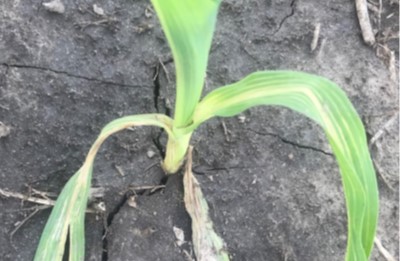 Image 1. Veinal chlorosis due to fomesafen carryover in corn.
Image 1. Veinal chlorosis due to fomesafen carryover in corn.
- Spraying herbicides that contain fomesafen in soybeans can result in carryover symptomology in corn next year if sprayed too late in the season.
- It may be time to discuss alternatives to fomesafen as we enter July, as many fomesafen-containing products have a 10-month rotational restriction to corn.
With the prevalence of glyphosate-resistant waterhemp across most of our region, there very few herbicide options to manage this weed in soybeans. The PPO-inhibiting (group 14) herbicides are viable options in soybeans to obtain adequate control of this hard to manage pigweed species that are not PPO-resistant. Soon, these options will be even more limited.
Fomesafen-containing herbicides (Flexstar®, Flexstar GT®, Prefix®, Warrant® Ultra, etc.) are popular group 14 options for managing waterhemp. However, the use of these herbicides will need to be discontinued as the calendar turns over to July. There is a need for caution when using these herbicides well into July, as fomesafen carryover into corn can occur the following season. The Flexstar® label states a 10-month rotational restriction when planting corn the following season. This means that an application occurring on July 1st of this year will not allow for corn planting until May 1st of next year. Fomesafen carryover is characterized by veinal chlorosis on corn leaves that is evident by the V3 growth stage (Image 1).
With fomesafen-containing herbicides slowly becoming a less viable option with each passing day, what options remain? The most common solutions would be a product that contains lactofen (Cobra®). Cobra® will be one of our main options for managing our resistant pigweeds as we move forward this season. This will be more suitable late season as there is less concern about potential herbicide carryover.
Cobra® applications can cause phytotoxicity to soybeans after application. However, warmer temperatures allow for more rapid recovery of soybeans. Additionally, the use of crop oil concentrate (FS COC Supreme™) will be needed to obtain optimal control of waterhemp. The addition of COC to the mix does not mean that water conditioners are not needed. The water conditioners will still be required for optimum control if glyphosate is used.
Overall, be conscious about the risks with late season fomesafen applications. Also, just because we may need to switch to a different PPO-inhibiting herbicide, does not mean that we can forget about the rules necessary to achieve the best results. We must still spray our weeds when small, use the correct nozzles, and be aware of the GPA needed to get the best coverage. Good luck with the remaining postemergence applications!